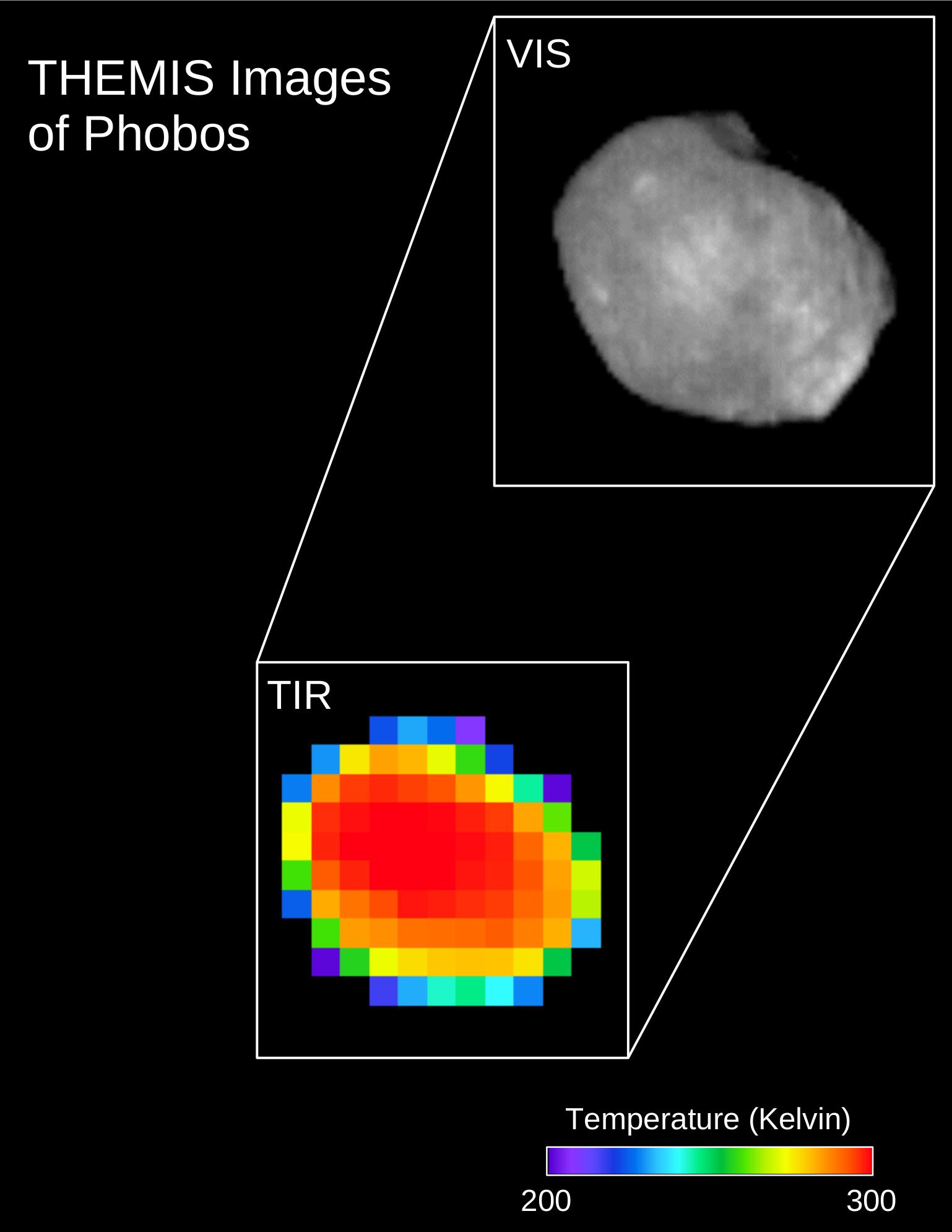
|
Phobos: Comparing Infrared and Visible Light Views
- Click the image above for a larger view
- Full-Res JPEG (1538 x 1990) (132.8 kB)
- Full-Res TIFF (1538 x 1990) (890.2 kB)
Caption:
These are two views of the same observation of the Martian moon Phobos taken in both infrared and visible light by NASA's 2001 Mars Odyssey orbiter using its infrared camera, Thermal Emission Imaging System (THEMIS). The image was taken on April 24, 2019.
The top view is what Phobos looked like in the visible light spectrum, as viewed by THEMIS. The bottom view is what it looks like in infrared, which reveals temperature differences. The warmest temperatures are in the center, and the coolest are on the outer edge. A scale bar is provided to reflect the temperatures, which range from 200 to 300 degrees Kelvin, or -100 degrees Fahrenheit (-73 Celsius) to 80 degrees Fahrenheit (27 Celsius).
Background Info:
NASA's Jet Propulsion Laboratory in Pasadena, California, manages the 2001 Mars Odyssey mission for NASA's Science Mission Directorate in Washington. THEMIS was developed by Arizona State University in Tempe, in collaboration with Raytheon Santa Barbara Remote Sensing.
The THEMIS investigation is led by Philip Christensen at ASU. The prime contractor for the Odyssey project, Lockheed Martin Space in Denver, developed and built the orbiter. Mission operations are conducted jointly from Lockheed Martin and from JPL, a division of Caltech in Pasadena.
Cataloging Keywords:
| Name | Value | Additional Values |
|---|---|---|
| Target | Phobos | Mars |
| System | Mars | |
| Target Type | Satellite | Planet |
| Mission | 2001 Mars Odyssey | |
| Instrument Host | Mars Odyssey | |
| Host Type | Orbiter | |
| Instrument | Thermal Emission Imaging System (THEMIS) | |
| Detector | ||
| Extra Keywords | Color, Infrared, Thermal | |
| Acquisition Date | ||
| Release Date | 2019-05-09 | |
| Date in Caption | 2019-04-24 | |
| Image Credit | NASA/JPL-Caltech/ASU/SSI | |
| Source | photojournal.jpl.nasa.gov/catalog/PIA23206 | |
| Identifier | PIA23206 | |
